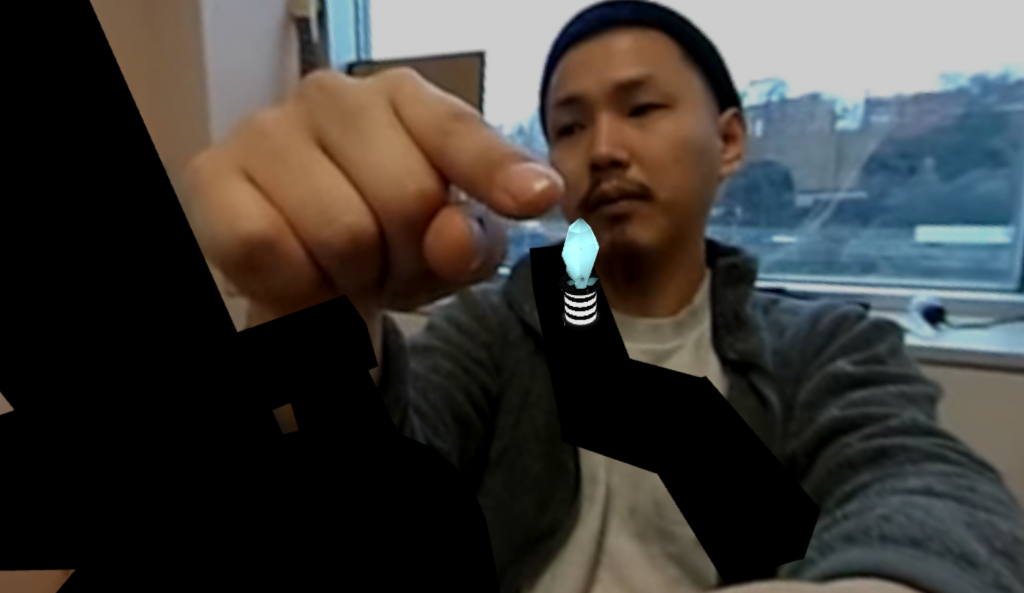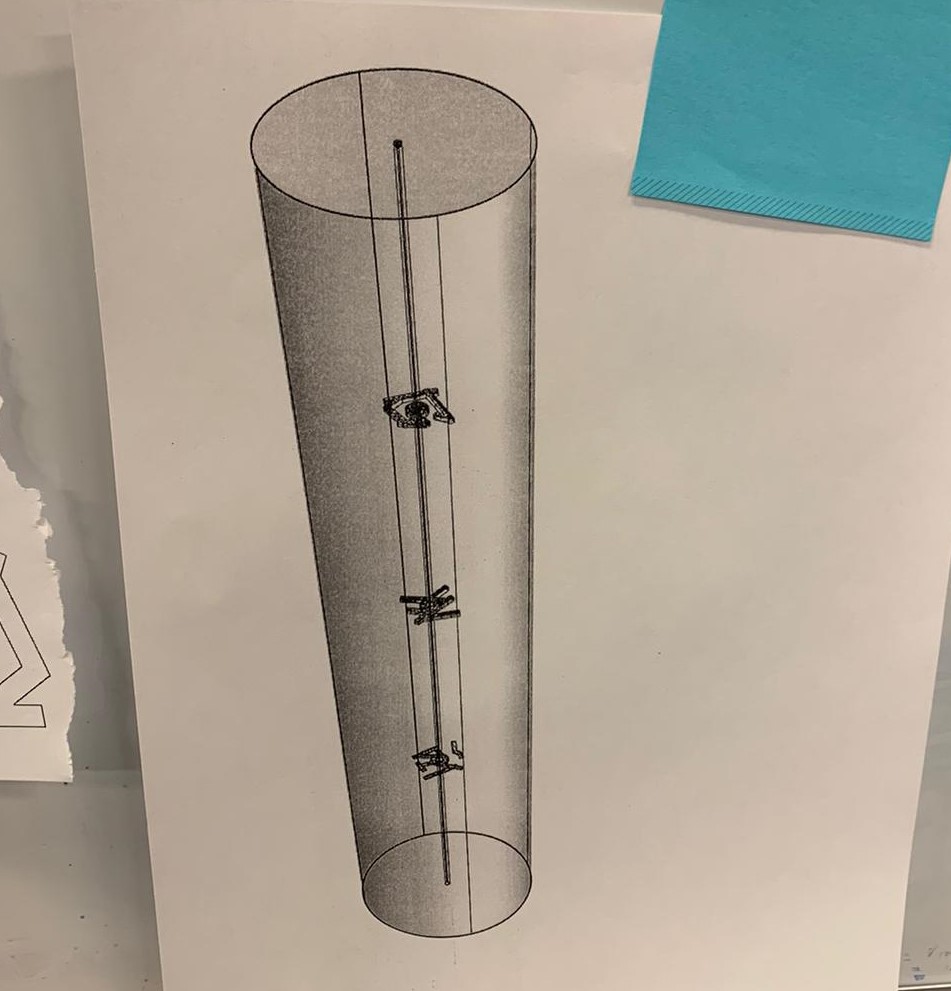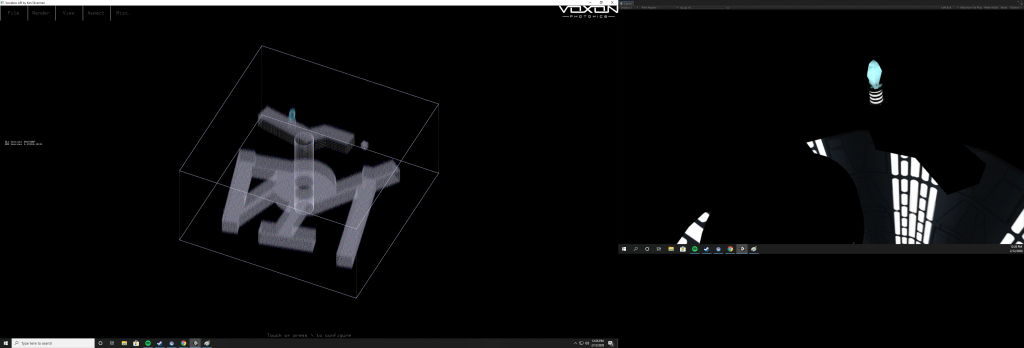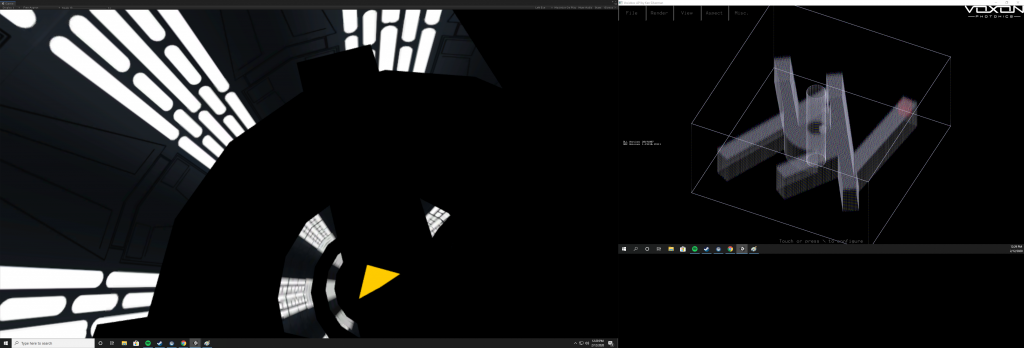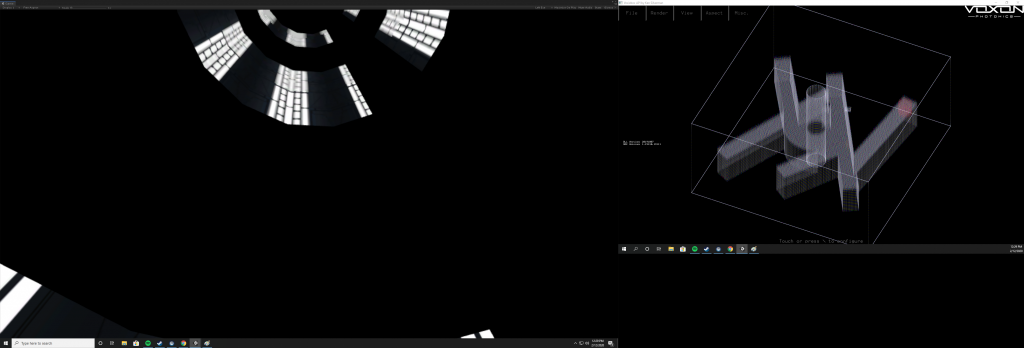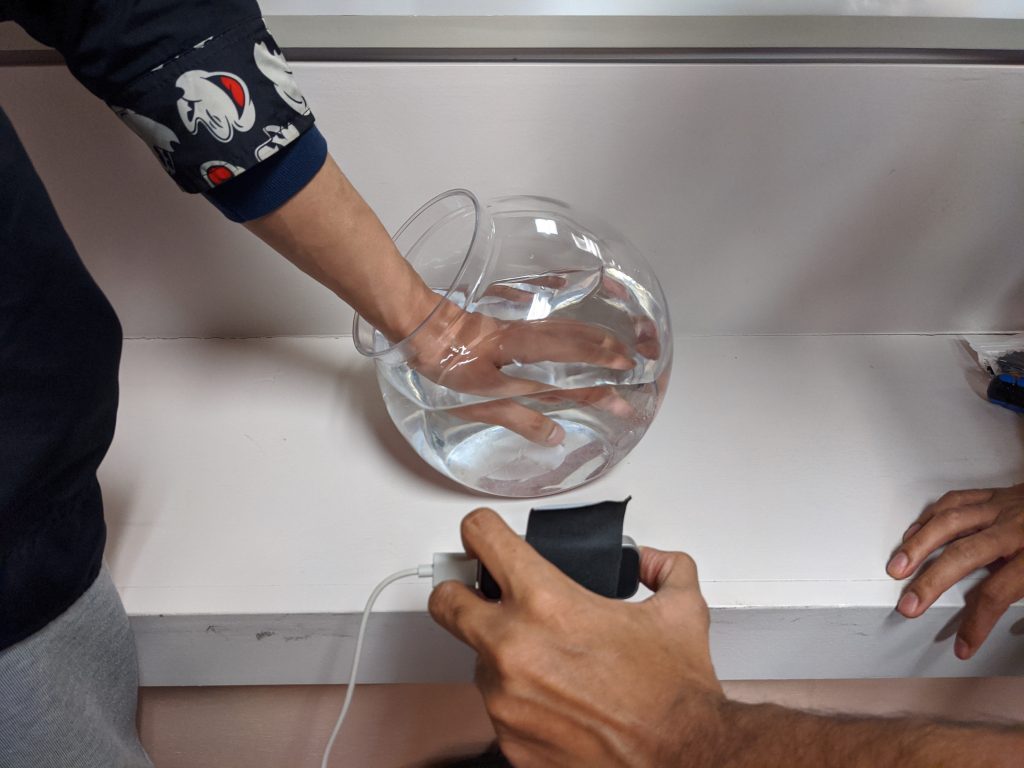The challenge we decided to tackle for this week was to create a multiplayer game that required movement around the display.
We decided to make a multiplayer fighting game, like Mortal Kombat or Super Smash Bros. However, we would be fighting cute, cuddly bears.
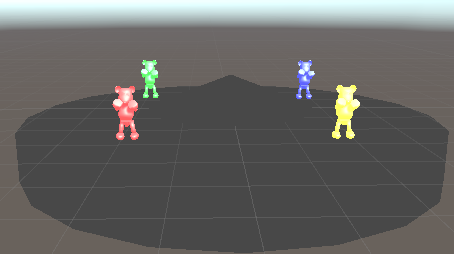
We decided on our input being an android app, as we could build our own controllers, use the different sensors already on the device, and be able to determine rotation using the accelerometer and magnetic field sensors.
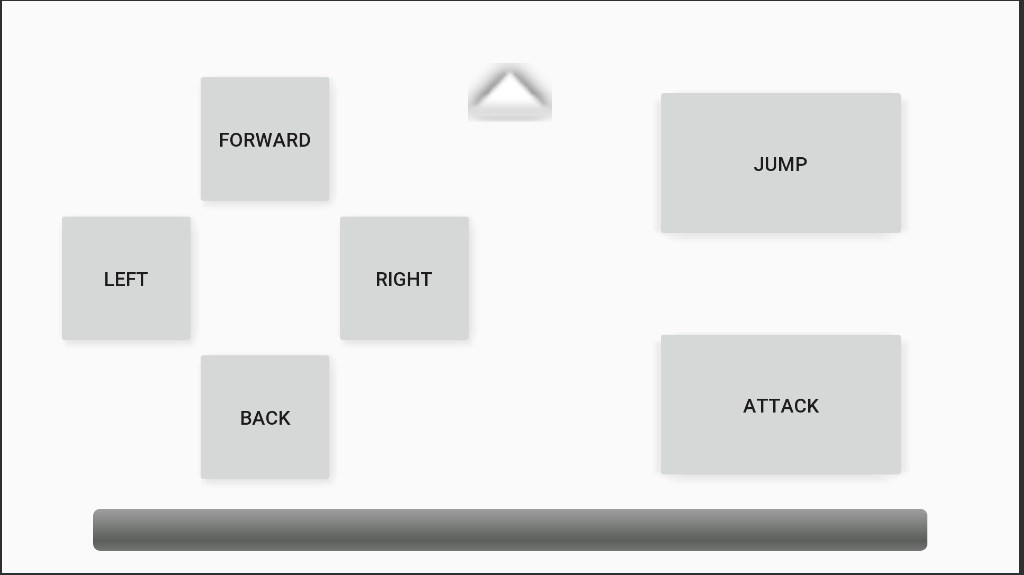
We added the movements seen in the UI above, as well as a Block action (triggered by moving the phone quickly upwards) and a Special Attack, which you can use when the progress bar at the bottom is completely full (which you fill by yelling into the phone’s mic).
Connecting the android device to the game was surprisingly easy, and we will probably use this interaction again if another prototype calls for it.
The game ended up being pretty fun, even just using the emulator on our desktop computer. We can’t wait to see if it would be just as fun on the Voxon device!
Learnings:
- Use the VOLUME FRAME LIMIT as a game mechanic
- Players can jump out of frame but can imply position
- No mesh for floor of the battle arena
- Need to see on device to see if players actually move around the device as expected.
- Using dynamic camera movements within the display as the players move around the arena allows for:
- more dynamic gameplay
- allows the area of gameplay, the ring or arena, feel bigger
- allows zoom in on characters and animations to see details that would be impossible to see if it was static

